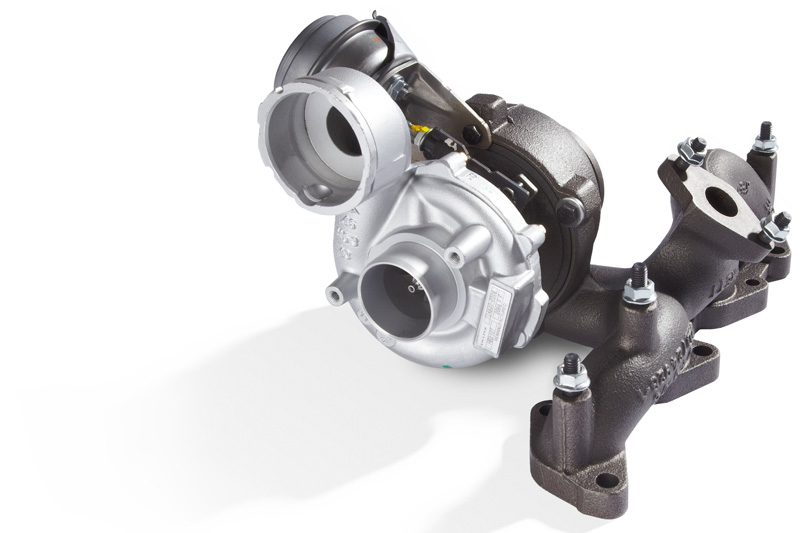
When a turbocharger has a problem, it can cause all manner of issues within a vehicle. Delphi Automotive reveals some best practice tips for treating these crucial parts.
The turbocharger is an integral part of the engine’s air and oil supply systems; any mechanical failure can result in extensive damage, and time-consuming repairs. Simply replacing a problematic turbo will not necessarily guarantee that the original issue is solved. It is therefore essential to establish the root cause of any problem, before carrying out the repair, otherwise you risk the replacement turbo failing too, causing unnecessary costs to your business.
Common causes of turbo failure
The majority of turbocharger failures occur as a direct result of other external issues.
Common causes include:
■ Foreign object impact: particles or fragments impacting the rotating assembly.
■ Oil contamination: a reduction in the quality of oil supplied to the turbocharger. This may include fluid contamination or particle contamination.
■ Oil starvation: a momentary or prolonged restriction in the supply of oil to the turbocharger.
These issues often cause instantaneous breakdown of the turbo, and potentially propagation of debris throughout the air supply system.
“95% of turbo failures are caused by external problems. Because of this, it’s important to understand and fix the root cause before you fit a new turbo,” confirms Mehmet Kulahci, Category Director, Engine Management and Service. “Not doing so could lead to repeated issues and extensive engine damage. This is costly to businesses, time consuming to customers and damaging to a workshop’s reputation.”
Likely symptoms
Common symptoms of a turbocharger-related problem may include the following:
■ Progressive or sudden loss of power.
■ Low boost pressure.
■ Black or blue smoke from the exhaust.
■ Harsh metallic noises originating from under the bonnet.
■ Engine management fault light (manifold pressure-related fault codes).
If any combination of the above symptoms is presented, the turbocharger system and associated parts should be thoroughly inspected and, where necessary, replaced.
“Delphi offers a comprehensive range of new and remanufactured turbos, for top European and Asian applications,” says Kulahci. “Built with OE equivalent components and processes for proven performance, reliability and durability, they offer a cost effective and high quality service option.”
DO:
- Check the entire air supply system, including the EGR valve and intercooler, for evidence of debris or damage. Clean both thoroughly and replace where necessary.
- Perform an engine oil and oil filter change, observing for evidence of oil contamination.
- Inspect, clean, and replace where necessary, the turbo oil feed and return lines.
- Check, and replace where necessary, the vehicle’s air filter element.
- Ensure that the internal bearings are thoroughly pre-lubricated with priming oil, and that the supply of fresh engine oil to the turbocharger is immediate and uninterrupted before starting the vehicle.
- Perform an engine oil pressure check, to ensure that the lubrication system is performing to OE specifications.
- Replace all seals and O-rings when re-fitting a turbocharger with new items , paying particular attention to the orientation and position of any gaskets used.
- Ensure the actuator or linkage mechanism is set correctly. (Note: all Delphi turbochargers are set and calibrated to OE specifications, saving technicians time when servicing or replacing components).
- Maintain a systematic, clean and thorough approach.
DON’T:
- Remove the protective caps or covers from the replacement turbocharger until each respective pipe/hose is to be fitted.
- Use liquid sealant at any joint or mating face associated with the air or oil system.
- Replace the turbo without first identifying and rectifying the root cause of the initial failure.









